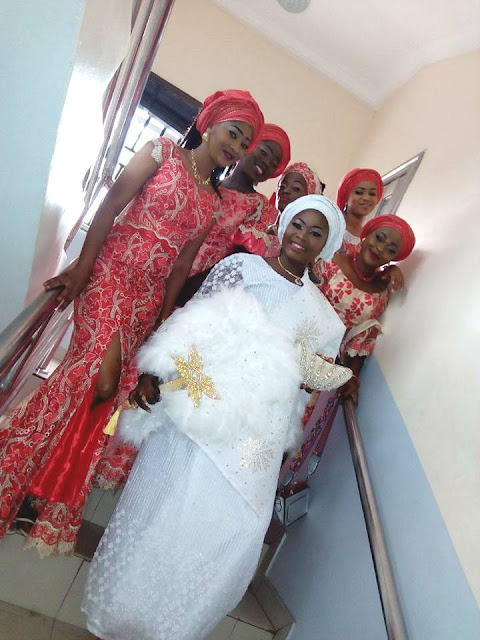By: NURUDEEN ISMAIL
Date: 30th March, 2017
Time: 07:30pm
The Yoruba Traditional Wedding Ceremony, also known as the Yoruba Engagement ceremony, or Igbeyawo in Yoruba, usually takes place days, weeks or even months before the white wedding ceremony. Some families choose to hold both weddings on the same day. The bride’s family is typically responsible for covering the ceremony costs, but some families choose to split the costs as they please. The entire ceremony is orchestrated by two representatives who are chosen or hired by each side of the family. The groom’s family is represented by the Alaga Iduro/ Olopa Iduro (standing policeman), while the bride’s family is represented by the Alaga Ijoko/Olopa Ijoko (sitting policeman).
Here Comes the Groom
The Yoruba traditional wedding ceremony usually kicks of with the bride’s family seated and waiting for the groom’s family to arrive. Both the groom and bride are absent at this point. Once the groom’s family arrive, the Alaga Ijoko welcomes them at the gate in the company of the the housewives of the bride’s side of the family. The Alaga then asks the groom’s family to state their reasons for coming before collecting an entry fee from them. Finally, she introduces them to the bride’s family before some prayers are said. After the introduction, the groom’s family kneel and prostrate before for the family of the bride. The two families then sit at opposite sides of the room, while the Alagas sit or stand in their midst.Once seated, the Alaga Iduro presents the proposal letter to the Alaga Ijoko on behalf of the groom’s family. This letter is read out loud by a younger female representative of the bride’s family, such as the younger sister or cousin. An acceptance letter is then presented to the groom’s family before some prayers are said.
After the prayers, the groom dances in with some of his friends, and prostrates a total of four times. On the first two occasions, he prostrates for his new in-laws with his friends, before prostrating before them alone the third time. During this third prostration alone, the two families stretch out their arms to pray for him. Before he takes his seat, he prostrates one final time with his friends, but this time around, before his own family. He then gives out some money before taking a seat while awaiting his bride’s arrival.
Here comes the Bride
Once the groom is seated, the veiled bride dances in accompanied by her
parents and Ore Iyawo, who are usually some close female friends and
female family members. She then kneels before her parents, who pray for
her and bless her. She does the same thing with her husband’s parents,
before taking off her veil and joining her husband. On getting to her
husband, she kneels before him while prayers are said for both of them.
He then gives her some money, before carrying her up for all to see. At
this point, the yoruba bride puts the groom’s fila (cap) on his head to
signify an accepted marriage proposal.
The Engagement Gifts – Eru Iyawo
Engagement gift packaging by wedding solutions company, I do Weddings Nigeria
Cutting The Engagement Cake – Akara Oyibo
Wedding Cakes by Panari Cakes
www.realafricanews.blogspot.com


















.jpeg)

